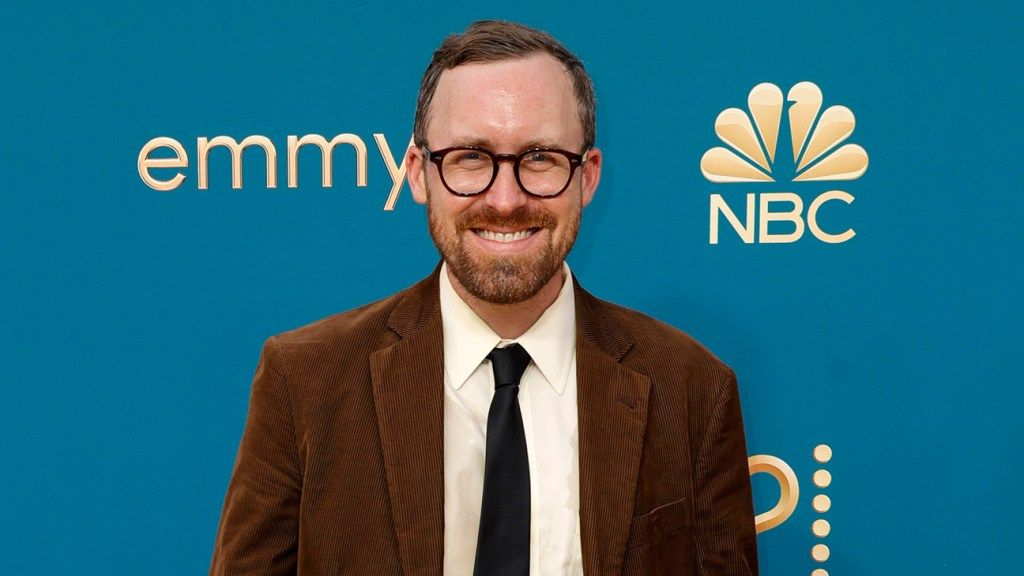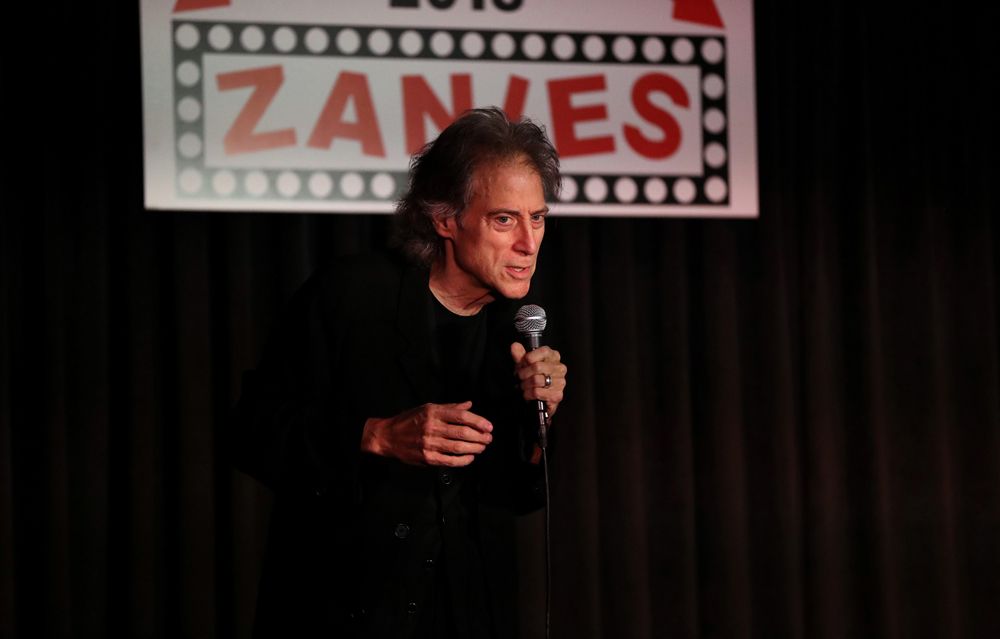The Hollywood Reporter
It can be challenging to describe HBO’s How To with John Wilson to the uninitiated. The show, which debuts its third and final season Friday night, presents itself on its surface as a guide to modern life with 30-minute episodes titles like “How to Find a Public Restroom” and “How to Clean Your Ears.” But as told through the eyes of its 36-year-old videographer narrator John Wilson — a self-described “anxious New Yorker” who was discovered by Nathan Fielder, who mines similar surreal territory in The Rehearsal — it begins to take on quirkier and more profound inflections. Imagine Mutual of Omaha’s Wild Kingdom with cameras trained on mankind; now imagine it drifting off occasionally into a melancholy road diary of lost America. That’s How To with John Wilson. The series has found a passionate following as well as critical acclaim (season two earned an Emmy nomination for outstanding writing for a nonfiction program). The Hollywood Reporter recently caught up with Wilson to talk about his creative process, his ongoing feud with the sex-cult NXIVM and the origins of his signature stammer. (Some episode one spoilers below.)
Nice to meet you, John. I love your show, mostly because I’ve never seen anything like it before — and I doubt I’ll see something like it again.
Cool. I mean, that’s why I wanted to make it, I guess.
You’ve said you have the biggest archive of New York City footage right before the pandemic. What has changed about the city since COVID-19?
It was kind of grim for a moment at the height of the pandemic. Thankfully, I was mostly just in the edit in-between seasons during the most dead period. So when season two production started formally, the city was finally starting to open up. The landscape has definitely changed, but people have just wanted to talk even more. They’ve been starved for conversation. I think visually, New York became really more exciting after the pandemic. The city just opens up kind of weird new avenues to you.
What did you want to accomplish in season three (the final season)? Or, does it always just sort of meander?
I had the episode titles that I had thought up in between seasons two and three. So I kind of had a general idea of what I wanted to cover, but I had no idea where I would end up, really. That’s kind of what’s scary at the beginning of each season — is that I know I’m about to do a bunch of really crazy stuff and there’s about to be a bunch of really crazy coincidences that I witnessed, but I don’t know what that is yet. There’s a a lot of anxiety at the top of the rollercoaster, before we descend.
Making this season, there was a bunch of stuff that I was afraid to explore or admit in the first couple of seasons that I was really excited to just kind of lean fully into. It made me really excited to fully indulge and reveal things that may have been a bit premature to reveal earlier.
Almost every episode, there’s a moment where you’re like, “Do I ask them if I can join them on whatever the hell they’re doing?” And you always do. Is that part of your natural personality, to want to do that? What are you thinking in those moments?
I think it’s part of my natural personality, but I don’t think I would have the confidence to follow it as far as I do without the camera with me. So it’s hard to say if you were to take one leg off the tripod, whether or not it would still stand. The show is not about restrooms or wine or whatever. That’s only how we begin. The mantra I try to operate with is just taking the first exit you can and taking that as far as you possibly can until you run out of road.
Having those opportunities is when I get really excited. Otherwise I get really frustrated that, like, I really am just making an episode about bathrooms. Like, what’s going on here? So I always feel like it’s a gift whenever I find some other thing to distract me or an opportunity to reinterpret or reveal some deeper truth about the subject matter. That’s the thing that excites me most.
So in this first episode, for example, you join a woman on her drive to Burning Man right across the country. I admire that you let your frustrations out in the episode. It turned into a legal battle over this Burning Man footage.
I had a lot more to say.
You can say it here.
I wanted to include the [venting about] Burning Man because it’s very much in the spirit of the show. I try to turn these bad things that happen to me into something good. The worst feeling in the world is when something is a net loss. When something bad happens, I need to to just sit with it, you know? Like, sure we were denied access to the Burning Man footage, but it ended up thematically working well with this idea of gatekeeping, private space and artistic expression and stuff like that.
I think it ended up making the episode stronger in a weird way than if I had just like used the material at Burning Man, which I feel like people have seen what Burning Man looks like, so I’m almost denying the audience that. With any bad thing that happens to me in my life, if I do something productive with that bad feeling or that bad event, then I feel better. It’s like, “This good thing would’ve never happened if that bad thing never happened.” I always am searching for that, whatever that good thing.
It was interesting that there was a NXIVM connection once again. They’re constantly your nemesis.
Right — [the lawsuit over the Burning Man footage] was from the production company that made The Vow, [featuring former NXIVM members].
I don’t want to rub salt in the wound. I just thought it was interesting.
If anyone has seen the episode that I had made about NXIVM, it just kind of proved how kind of rotten their character is, yet again.
Because NXIVM leader Keith Raniere, just to explain to people who might not know, was your a capella nemesis in college.
Yeah. He was this kind of self-appointed a capella guru. We have a long history. He’s still puppeteering from a maximum security prison.
You know, this is the longest I’ve ever looked at your face straight on. Because you keep your face rather hidden in the show.
That’s by design. It’s a shame that so much content these days has the camera focused on the host’s face. It’s just such a waste of an image, you know? I feel like the most interesting imagery out there does not have me in it. I wanted to remove the vanity from it. I mean, even though it’s a very ego-driven show. But I just didn’t wanna film myself. It allows the viewer to project as much of themselves onto the image as they possibly can.
And it also helps because you’re still not recognized, I would imagine, on the street.
I have been recognized a lot more — and I don’t know how or why, but mostly with people that are around my age.
But then to most people you’re just some guy with a video camera, which leads to funny interactions with overzealous security. Like at the Hudson Yards.
Oh yeah, it was fascist. Hudson Yards is a very hostile space for, uh, documentarians. It’s also where HBO is based.
Nathan Fielder was instrumental in bringing you to HBO, is that right?
Yeah. He opened all the doors for me. And I am eternally grateful to him for that.
What can you tell us about your friendship with him?
We have become really close over the past few years with the show. During season one, he was there every day, over my shoulder a lot of the time. Just kind of like really beating the ego out of me. I thought I had all the answers when I first started the show, but I definitely didn’t. And he really beat all that out of me. Not like physically — even though Nathan could probably beat me up as well.
What was he trying to beat out of you, exactly?
My first approach was a bit more formless. I didn’t really know how to shape it narratively. And he taught me how to craft all of this random stuff into a story that would end up with an emotionally satisfying climax. It was really, really helpful. I had never really like a story like that before. He was just so experienced with it from Nathan for You. Also having [former Saturday Night Live writer] Michael Koman as an EP and co-writer for all three seasons — he’s really great with story too.
But as for Nathan, like one example, in the very first episode I used a bunch of shots of mannequin faces to express some thought. And then in the second episode I was like, “Let’s use some mannequins again.” And he is just like, “No, we used that earlier.” That was the first time I was like, “Oh, OK, so don’t ever go backwards. Just keep the material fresh.” That was this philosophy that has extended until now: continue to surprise people, don’t regress, stuff like that.
The first thing that jumps out when you start watching the show, I’ll never forget, is your voiceover. The viewer has to grow accustomed to your cadences. I remember when it clicked for me. I was like, “Oh, he’s kind of like Bob Newhart.” Bob has this kind of stammer that is kind of inviting, instead of halting. Not that I’m saying you’re imitating Newhart, but for me, that’s what helped me get used to it.
OK, cool. I actually don’t know Bob Newhart. I haven’t really, like, consumed that much of him. I want to listen now to see what you’re talking about.
You should definitely check out his old comedy albums and his sitcoms. He does it a lot. It adds to the joke. But in talking to you here, I see that it is not as pronounced as when you do the voiceover on How To.
Right? Yeah. I think the way that I craft the show necessitates it in a way. Because there’s a very specific order that I edit things. The editors and I, we basically cut everything — like we put all the shots in the order that we want and then we kind of write a script over that. And then I record the voiceover. I have to have everything fit the length of the shot. The timing is very specific, like almost down to the frame. So if there is a bit of a stammer, it’s because I’m trying to make the right word land at the right time when something is revealed within a shot. So yeah, there is a bit of stammering. It’s also for comedic effect, you know, even if you don’t think it’s funny.
Well, I do think it’s funny. Thank you John. I hope this wasn’t too painful. I’m excited for the rest of the season and keep up the great work.
You’re, uh — you’re in for something.
Interview edited for length and clarity.
How To with John Wilson releases on HBO Max Fridays at 11 p.m. ET.
Source: Hollywood Reporter


